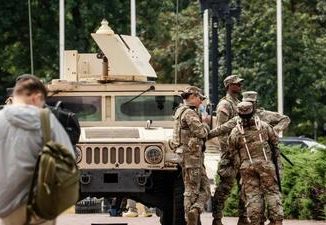
Published November 5, 2025
In a time when security is increasingly uncertain, China’s latest innovation in personal protection has captured global attention — civilian anti-stab clothing. Once designed exclusively for law enforcement and military use, this technology has now found its way into the wardrobes of ordinary citizens. The trend is spreading fast, sparking both fascination and unease about what it reveals regarding safety, society, and trust.
A Shield Woven in Cloth
Manufactured primarily from ultra-high-molecular-weight polyethylene (UHMWPE) and aramid fibers, these garments are engineered to resist slashes and punctures from knives and other sharp weapons. The same materials are often used in bulletproof vests, cut-resistant gloves, and high-performance ropes.
What makes this development striking is not the science itself — but the target market. Priced around US$70 to US$80, these vests and jackets are now accessible to middle-class consumers in China. Promotional materials highlight their use for “everyday protection,” suggesting that even civilians now feel the need for armor in daily life.
Online videos show young professionals, delivery workers, and commuters trying on sleek jackets capable of deflecting a knife thrust. Many wear them under regular clothing — a subtle form of self-defense that speaks volumes about modern fears.
The Market of Fear
China’s anti-stab clothing industry emerged quietly but is now expanding rapidly. Small factories that once supplied police or private security forces have shifted toward mass production for consumers. E-commerce platforms like Taobao and Alibaba list hundreds of such products, often advertised with slogans like “Be safe wherever you go” or “Because danger can come unexpectedly.”
This booming market shows how fear itself can become a profitable commodity. As consumers seek safety in a volatile social climate, protective apparel transforms into a new category of necessity — one that mixes technology, psychology, and commerce.
The phenomenon also reveals a change in how safety is perceived: not as a guaranteed right, but as a personal responsibility one must purchase and wear.
When Security Becomes Style
Interestingly, many of these garments are designed to look like ordinary fashion pieces — hoodies, windbreakers, or office jackets — to avoid drawing attention. Manufacturers emphasize that the clothing is “discreet,” “lightweight,” and “fashion-friendly.”
This approach blurs the line between security gear and streetwear. It introduces a new aesthetic — one where defense meets design. The trend echoes similar developments in the West, where anti-theft backpacks, GPS-tracking accessories, and hidden-pocket jackets have become popular. Yet, the anti-stab apparel goes a step further: it embodies not just precaution, but preparation for violence.
Reflections on Public Safety
The appearance of such products raises uncomfortable questions about the state of public safety. When ordinary people begin wearing anti-stab jackets to work or school, it suggests a lack of confidence in law enforcement and community security. It also reflects a world where fear has seeped so deeply into public consciousness that armor now feels as natural as clothing.
Critics see this as a symptom of institutional failure — when governments cannot assure safety, the market steps in. Supporters, on the other hand, view it as empowerment: an individual’s right to self-protection in uncertain times.
Beyond Technology
While the science behind anti-stab fabrics is impressive, it’s worth noting that no material offers total protection. These garments can resist slashes and shallow thrusts but not necessarily high-force stabbings or gunfire. In this sense, they offer more psychological comfort than complete security.
Still, the symbolism is powerful. A society that wears its fear — literally — is one that tells a story about its anxieties, priorities, and the balance between safety and freedom. The “garment of fear,” as some call it, is not just clothing; it’s a mirror reflecting how much trust people have lost in the spaces around them.
 Implications of “The New Garment of Fear”
Implications of “The New Garment of Fear”
1. Public Safety and Social Trust
-
The rise of civilian anti-stab clothing implies that citizens no longer feel fully protected by law enforcement or their government.
-
It reflects growing fear in daily life — a psychological shift where people see danger as routine, not exceptional.
-
In societies where trust in institutions weakens, people look for personal safety solutions rather than relying on public systems.
2. Normalization of Defensive Apparel
-
Clothing that was once specialized for police or military use is entering mainstream consumer markets.
-
This blurs the line between civilian and tactical wear, potentially normalizing the presence of protective gear in public spaces.
-
Such normalization can subtly reinforce anxiety — the more people wear “anti-stab” jackets, the more others perceive the environment as unsafe.
3. Market and Economic Signals
-
A growing market for defensive garments suggests fear itself has become profitable.
-
Companies in China and beyond may capitalize on public insecurity, pushing “safety wear” as a lifestyle product.
-
This could open new global markets — even in countries with rising street crime or unstable political climates — creating a commercialization of fear.
4. Technological Diffusion
-
The spread of materials like UHMWPE and aramid fibers into cheap consumer products shows how military-grade innovations trickle down into civilian life.
-
Over time, this could drive further research into lightweight, affordable protective materials, expanding beyond stab resistance to other hazards (e.g., heat, impact, radiation).
-
However, it also raises export-control and misuse concerns, since these materials could be repurposed for unlawful or violent activity.
5. Ideological and Political Reflection
-
The article frames this as evidence of the Left’s failure to ensure public safety — turning a product trend into a political argument.
-
Whether one agrees or not, it underscores how technological phenomena can be politicized, especially when tied to emotion-laden topics like crime or fear.
-
The politicization of safety products might deepen ideological divides: one side seeing self-protection as empowerment, the other as a symptom of systemic decay.
6. Cultural and Psychological Effects
-
Widespread defensive apparel could reshape cultural norms about trust, openness, and community interaction.
-
If citizens begin viewing each other through a lens of potential threat, it erodes social cohesion — people start dressing defensively, thinking defensively, and living defensively.
-
This creates what sociologists call a “culture of threat”, where fear drives fashion, behavior, and even identity.
7. Global Ripple Effects
-
Other nations may soon follow this trend — especially urbanized societies dealing with rising violence or civil unrest.
-
For countries like the Philippines, it could inspire local entrepreneurs to develop affordable protective apparel.
-
Yet it also challenges governments: if people buy their own protection, pressure increases on public institutions to prove they can restore safety and trust.
 Overall Takeaway:
Overall Takeaway:
The emergence of China’s “anti-stab clothing” symbolizes more than a breakthrough in textile innovation — it mirrors a deeper societal unease. As technology once reserved for soldiers and law enforcers becomes part of civilian fashion, it reveals how fear is being woven into the fabric of daily life.
This phenomenon highlights two contrasting realities: human ingenuity can create solutions for safety, yet those same innovations expose how fragile the sense of security has become. When citizens turn to personal armor instead of public assurance, it signals not just technological progress but also institutional and cultural regression.
Ultimately, the “garment of fear” stands as both a protection and a warning — protection against physical harm, but a warning that trust, not technology, remains the most vital layer of safety any society can wear.
SOURCES: THE GATEWAY HISPANIC – The New Garment of Fear: China Manufactures “Anti-Stab” Clothing and Exposes the Left’s Failure to Guarantee Public Safety





Be the first to comment